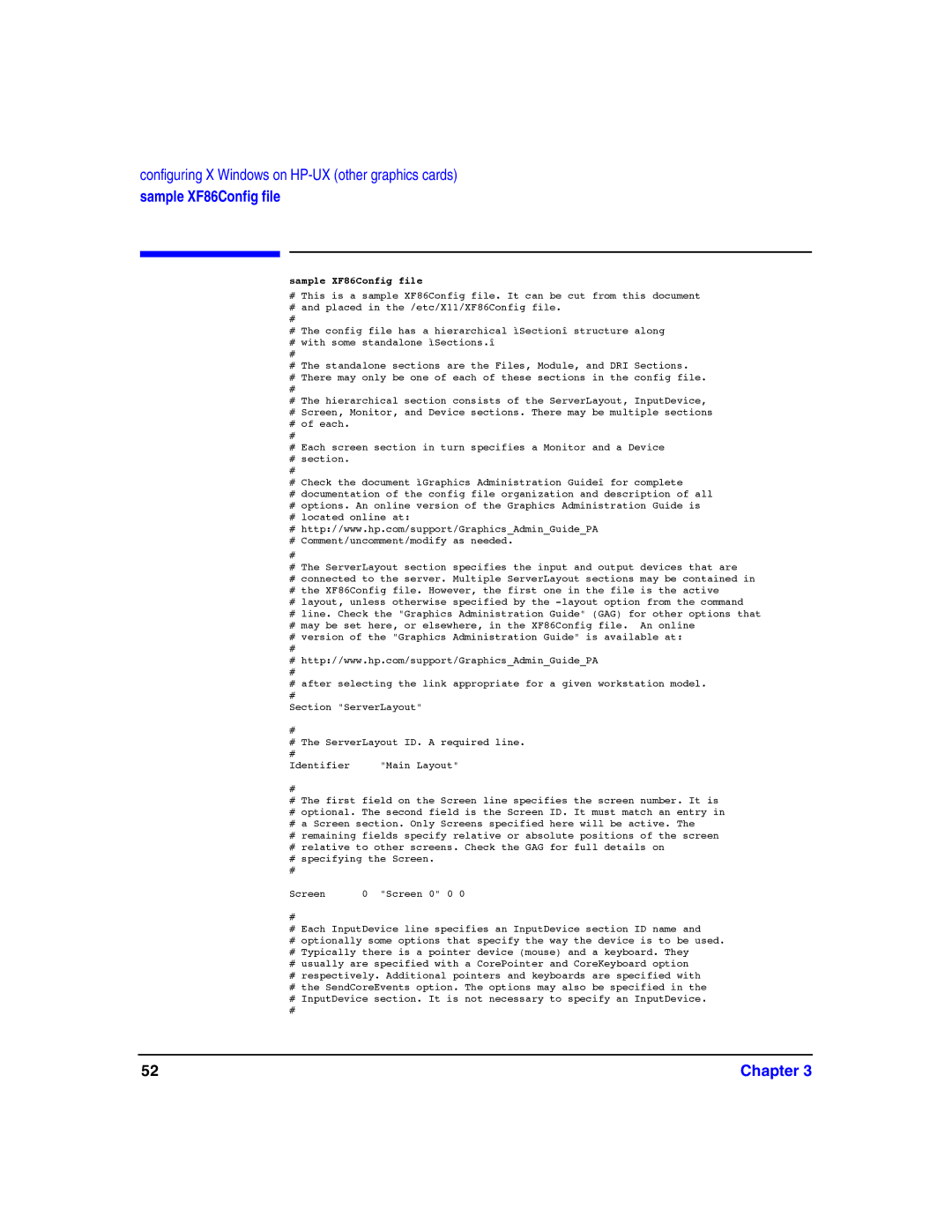
configuring X Windows on HP-UX (other graphics cards)
sample XF86Config file
sample XF86Config file
#This is a sample XF86Config file. It can be cut from this document
#and placed in the /etc/X11/XF86Config file.
#
#The config file has a hierarchical ìSectionî structure along
#with some standalone ìSections.î
#
#The standalone sections are the Files, Module, and DRI Sections.
#There may only be one of each of these sections in the config file.
#The hierarchical section consists of the ServerLayout, InputDevice,
#Screen, Monitor, and Device sections. There may be multiple sections
#of each.
#
#Each screen section in turn specifies a Monitor and a Device
#section.
#
#Check the document ìGraphics Administration Guideî for complete
#documentation of the config file organization and description of all
#options. An online version of the Graphics Administration Guide is
#located online at:
#http://www.hp.com/support/Graphics_Admin_Guide_PA
#Comment/uncomment/modify as needed.
#
#The ServerLayout section specifies the input and output devices that are
#connected to the server. Multiple ServerLayout sections may be contained in
#the XF86Config file. However, the first one in the file is the active
#layout, unless otherwise specified by the
#line. Check the "Graphics Administration Guide" (GAG) for other options that
#may be set here, or elsewhere, in the XF86Config file. An online
#version of the "Graphics Administration Guide" is available at:
#
#http://www.hp.com/support/Graphics_Admin_Guide_PA
#after selecting the link appropriate for a given workstation model.
Section "ServerLayout"
#
#The ServerLayout ID. A required line.
Identifier
#
#The first field on the Screen line specifies the screen number. It is
#optional. The second field is the Screen ID. It must match an entry in
#a Screen section. Only Screens specified here will be active. The
#remaining fields specify relative or absolute positions of the screen
#relative to other screens. Check the GAG for full details on
#specifying the Screen.
#
Screen | 0 "Screen 0" 0 0 |
#
#Each InputDevice line specifies an InputDevice section ID name and
#optionally some options that specify the way the device is to be used.
#Typically there is a pointer device (mouse) and a keyboard. They
#usually are specified with a CorePointer and CoreKeyboard option
#respectively. Additional pointers and keyboards are specified with
#the SendCoreEvents option. The options may also be specified in the
#InputDevice section. It is not necessary to specify an InputDevice.
#
52 | Chapter 3 |
